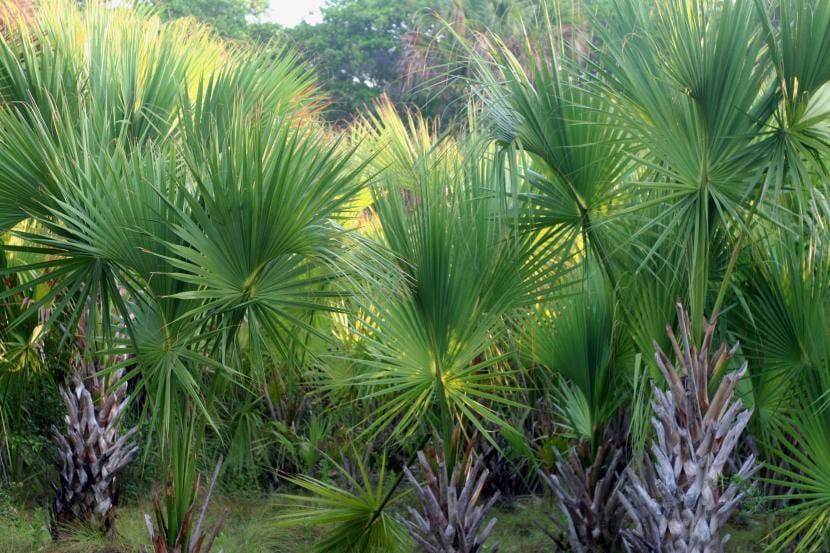
Mexican Sabal
Palm trees are one of the most elegant plants that we can find in the world, and of course also in gardens. It is estimated that there are about three thousand species, the majority distributed by the tropical and subtropical regions. One of the most appreciated genres is In the tail, for its beauty and rusticity.
Although they grow slowly and usually need a lot of space to be able to develop well, the reality is that whenever you have the opportunity, it is interesting to have a specimen. Discover everything about these magnificent palm trees.
Origin and characteristics
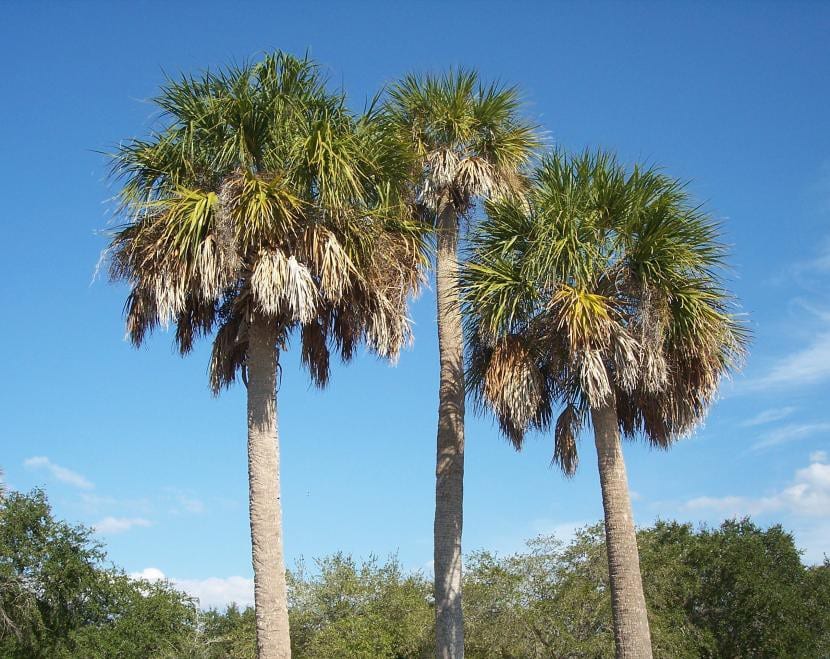
saw palmetto
It is a genus composed of some fifteen species native to warm to temperate tropical regions from the southeastern United States south through the Caribbean Sea, Mexico and Central America to Colombia and Venezuela in northern South America. His name is Sabal, and are plants that reach heights between 2 and 20 meters, with a trunk thickness of up to 40-45cm in diameter.
The leaves are costa-palmadas up to two meters wide, formed by segments up to 1m long by 4-7cm wide. The flowers are grouped in inflorescences, and are almost as long as the leaves. The fruit measures 11-20mm in diameter, and is spherical. This contains a seed of 7,7-13,3mm in diameter.
Main species
- saw palmetto: It is native to the southeastern United States, Cuba and the Bahamas. It reaches a height of up to 20 meters, with a trunk thickness of 45cm. The leaves are 1,5-2m long.
Resists up to -14ºC. - Sabal maritime: It is native to Jamaica and Cuba. It reaches 15 meters in height, with a trunk thickness of 25-40cm. The leaves are about 1,5m long.
It resists frosts down to -6ºC. - Sabal minor: It is native to the southeastern United States. It reaches a maximum height of 3 meters, with a trunk thickness of up to 30cm. The leaves are between 1,5 and 2 meters long.
Resists up to -18ºC. - Sabal uresan: it is native to the Sorona desert, in Mexico. It reaches a height of 20 meters, with a trunk diameter of up to 40cm.
Resists up to -12ºC.
It is a species in danger of extinction due to loss of habitat.
What are their cares?
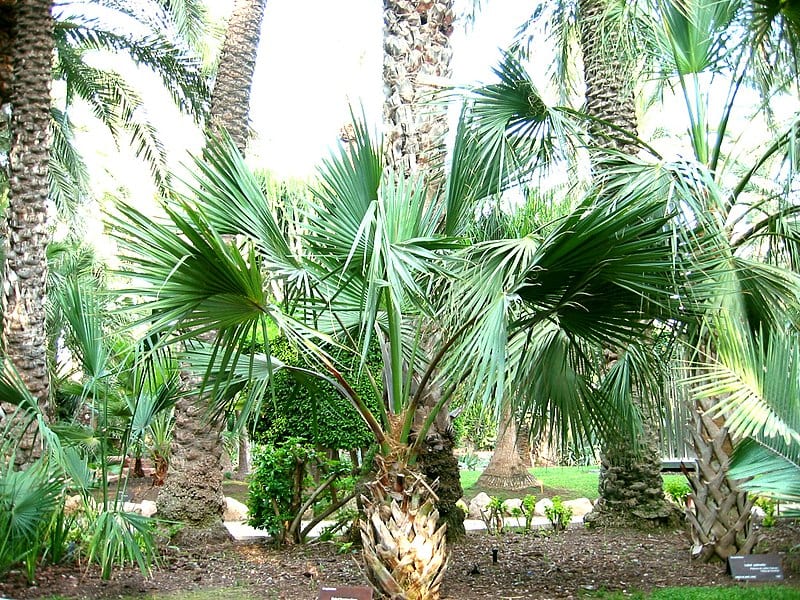
Sabal bermudana // Image - Wikimedia / Cookie
If you want to have a copy, we recommend that you provide it with the following care:
Location
They are plants that must be abroadEither in full sun or with a little shade (either in the morning or in the afternoon). They do not have invasive roots, but it is advisable to plant them at a distance of about 4-5 meters from pipes, paved soils, etc.
Earth
- Garden: grows in deep, light, well-drained soils.
- Flower pot: use 60% mulch (on sale here) mixed with perlite (get it here) and worm castings (you can have it by making click here) in equal parts.
Irrigation
The Sabal are plants that quite like water, but be careful, without reaching the ponding. During the hottest season they need to be watered very often, every 2 or 3 days maximum, and the rest once or twice a week..
In any case, to avoid problems, it is advisable to check the humidity of the soil before watering, either by introducing a digital humidity meter, or by inserting a thin wooden stick (if when removing it it comes out with a lot of soil attached, do not water).
Subscriber
From early spring to late summer must be paid regularly with ecological fertilizersand guano, manure or compost. In case of having it in a pot, use liquid fertilizers following the indications specified on the product packaging to avoid the risk of overdose.
Multiplication
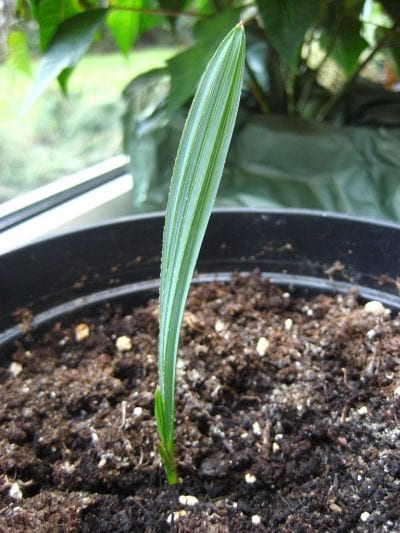
Sabal minor just germinated.
The Sabal multiply by seeds in spring-summer. There are different ways to sow them:
In a bag
It is the ideal method to sow them in early spring, or even in winter or fall. The step by step to follow is as follows:
- First, they are kept in a glass of water for 24 hours.
- Then, a transparent plastic bag with a hermetic seal is filled with vermiculite previously moistened with water.
- Afterwards, the seeds are put inside, and covered with vermiculite.
- Lastly, the bag is placed near a heat source.
You have to open the bag from time to time to check the humidity of the substrate, since it usually dries quickly.
Potted
It is the most correct method to sow them in summer, or in areas where the climate is warm all year round. The step by step is:
- First, the seeds are kept in a glass of water for 24 hours.
- Then a pot is filled with universal growing medium mixed with 30% perlite, and watered.
- Afterwards, a maximum of two seeds are placed in the pot.
- Finally, the container is taken outside, in semi-shade.
Regardless of which method you use, you should know that the seeds take an average of two months to germinate.
Planting or transplanting time
In spring. In chaos of having it in a pot, transplant every 2 or 3 years.
Plagues and diseases
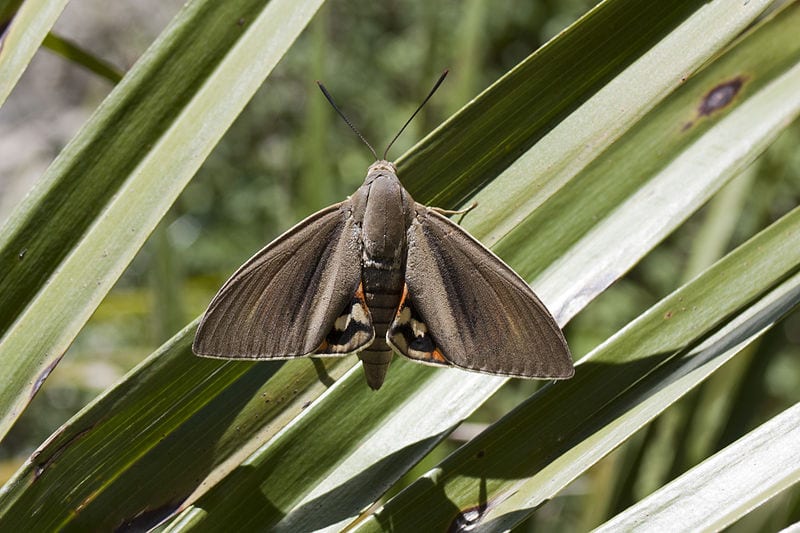
Generally they are very resistant, but they can do nothing against the weevil and the paysandisia archon. To help them, you have to do preventive treatments with Imidcaloprid and / or with these remedies that we tell you in this article.
Pruning
In mid / late autumn or late winter dry leaves can be removed.
Rusticity
It depends a lot on the species. They all resist frost, but some are less cold than others. If you have questions with any specific one, contact us 🙂.
What did you think of the Sabal?